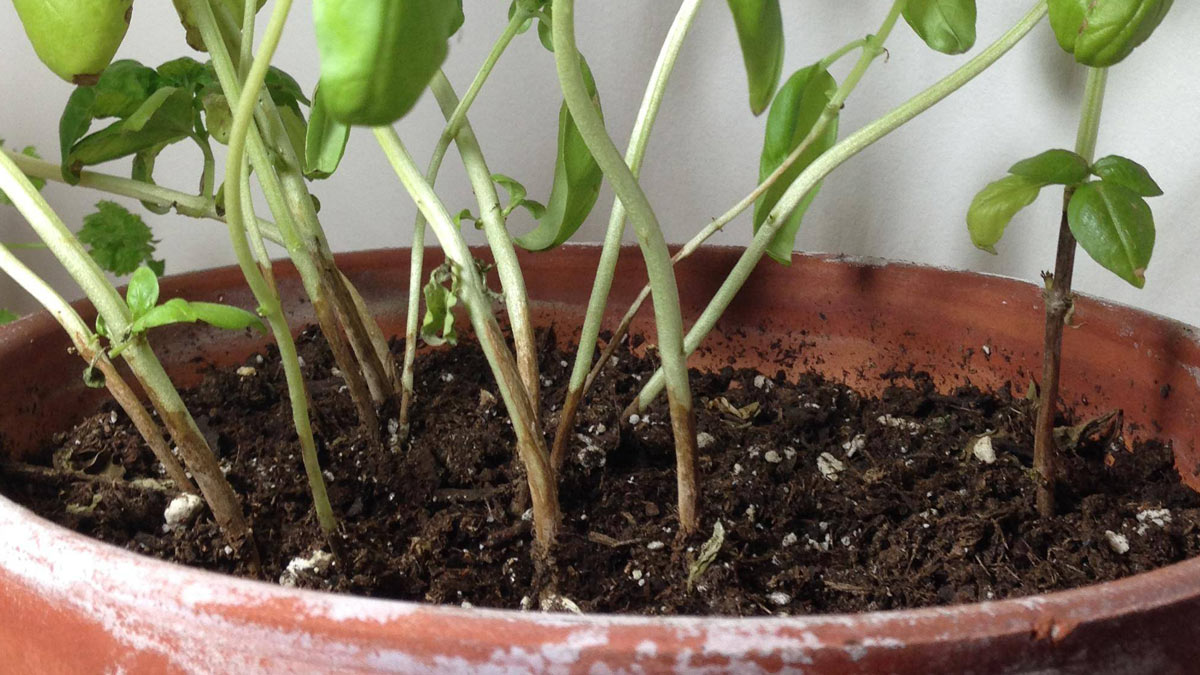When you click “Accept,” you agree that Houzz and our partners can use cookies and other tracking tools to make content more relevant to you, show you ads that are more relevant to your interests, and make our site work better. You can read our Cookie Policy, Privacy Policy, or customize preferences here.
As a gardener, nothing is more disheartening than seeing your lush, green basil plant take a turn for the worse Overnight, the once vibrant leaves start drooping and the stems begin shriveling and turning an ugly brown
If this has happened to your basil, don’t despair. Brown stems on basil don’t necessarily mean your plant is doomed. Here’s what you need to know about this frustrating issue and how to resolve it to get your basil back to its former glory.
Why Basil Stems Turn Brown
The most common causes for basil stems turning brown are:
- Overwatering
- Underwatering
- Extreme weather fluctuations
- Fungal infections
- Pests
- Old age
Overwatering
Basil is susceptible to root rot if the soil stays constantly wet. Excess moisture prevents the roots from getting air circulation. As the roots suffocate and start dying off, they are unable to absorb nutrients and water. This stress manifests first in the stems as they shrivel and turn brown.
Underwatering
On the flip side, basil needs consistently moist soil If you forget to water your basil for an extended time, the plant becomes extremely stressed With no water to keep it hydrated, the leaves wilt and the stems dehydrate and turn brown.
Temperature Fluctuations
Basil thrives in warm weather between 70-85°F. Temperatures lower than 50°F or higher than 90°F can shock the plant. Fluctuating between temperature extremes too quickly also causes stress. The plant responds by the stems and leaves shriveling and turning brown.
Fungal Infections
Excess moisture combined with poor air circulation often leads to fungal diseases like fusarium wilt. This fungus invades and blocks the plant’s vascular system, preventing water and nutrients from reaching the upper foliage. As the infection spreads, the leaves wilt and the stems turn brown.
Pests
Common basil pests like aphids, spider mites, and thrips damage the plant as they feed on the leaves and stems. The physical damage and toxins from their saliva cause the basil’s stems to turn brown and die back.
Old Age
Finally, basil is an annual plant that reaches the end of its natural life cycle at around 8-10 weeks. As the plant bolts and flowers, the stems will naturally turn woody and brown even without any underlying issues
What To Do When Basil Stems Turn Brown
The course of action depends on the underlying cause of the discoloration. Here are some tips to revive your basil plant and get rid of those unsightly brown stems:
Adjust Your Watering
If you suspect over or underwatering, alter your watering schedule. Basil needs about 1 inch of water per week. Water thoroughly until it drains from the bottom, then allow the soil to partially dry out before watering again.
Move Indoors
If temperature fluctuations are the culprit, move your potted basil to a sunny indoor location. Maintain temperatures between 65-80°F for optimal growing.
Improve Air Circulation
To prevent fungal diseases, space out your basil plants to increase airflow. Water early in the day so the foliage dries quickly. Remove any diseased foliage immediately.
Apply Fungicide
For minor fungal infections, apply a copper-based fungicide spray. Remove severely infected plants to prevent spreading spores.
Control Pests
Check closely for signs of pests like sticky leaves or visible bugs. Knock aphids off with a strong spray of water. Apply neem oil or insecticidal soap to kill most soft-bodied insects.
Prune Back Brown Stems
If the brown stems are localized, prune them off 1-2 inches below the discoloration. This eliminates dead tissue and allows new growth.
Harvest Remaining Leaves
If your plant is bolting and browning from old age, harvest any remaining usable leaves. Then pull up the plant and add it to your compost. Replant with a new basil seedling.
Start Over with a New Plant
For severe infestations or widespread disease, it’s best to remove the plant entirely and start over with fresh, healthy plants. Thoroughly sterilize pots and tools before replanting.
How To Prevent Basil Stem Damage
While brown basil stems are common, you can take proactive steps to keep your plants healthy and minimize issues:
- Choose disease-resistant varieties like ‘Italian Large Leaf’ or ‘Aroma 2’
- Plant in well-draining soil and containers with drainage holes
- Avoid overhead watering which can spread fungal spores
- Allow space between plants for airflow
- Use clean and disinfected pruning shears
- Monitor for pests and treat early before extensive damage occurs
- Harvest leaves frequently to encourage new growth
- Fertilize every 2-3 weeks to keep plants vigorous
Don’t Give Up on Brown Stemmed Basil!
Brown basil stems don’t have to spell certain doom for your plant. With some TLC and troubleshooting, you can often nurse the plant back to health. But if the damage is too severe, remember basil is a rapidly growing annual. Simply pluck off the remaining leaves and start fresh with new seedlings. With the right care, you’ll have bountiful harvests of vibrant green basil again before you know it!
Basil Stem Turning Brown | Brown Spots On The Basil Plant Stems | Causes & Solutions | 2022
FAQ
Why is the stem of my basil turning brown?
How do you fix Woody basil stems?
What does overwatered basil look like?
How to treat brown spots on basil stems?
- The Ultimate Guide to Growing Strawberries in Raised Beds - August 8, 2025
- No-Dig Garden Beds: The Easiest Way to Grow a Beautiful Garden - August 6, 2025
- How to Protect and Preserve Wood for Raised Garden Beds - August 6, 2025

